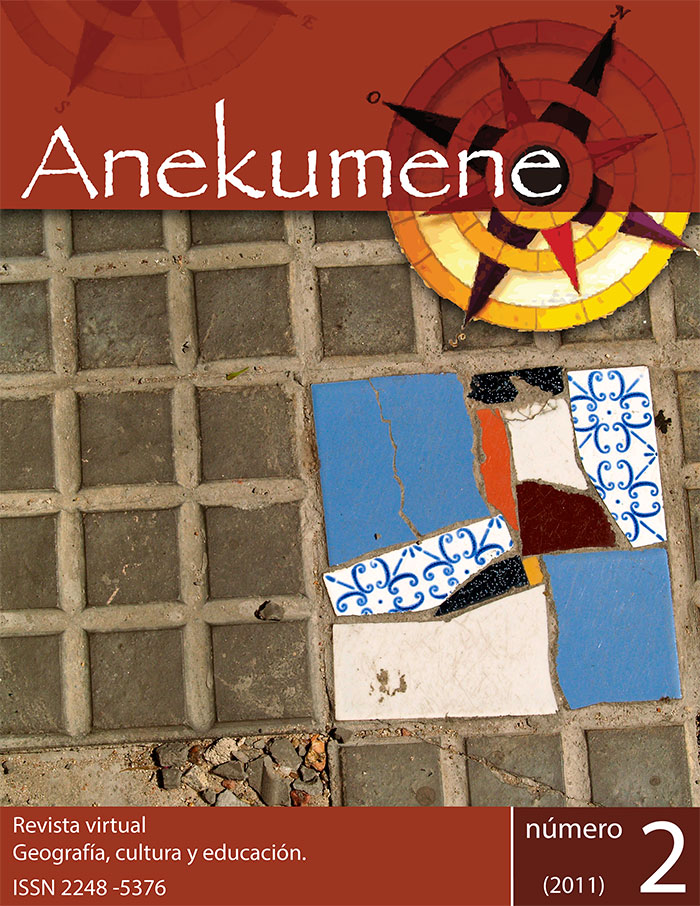"Wormholes" en el núcleo común: Razonamiento espacial, alfabetización y educación matemática
Resumen
Las últimas décadas del sigloXX fueron testigas de una revolución en la investigación del cerebro. Usando las nuevas tecnologías de escaneo los investigadores encontraron que el razonamiento espacial humano utiliza una serie de estructuras cerebrales apartadas que funcionan con cierta independencia, a menudo simultáneamente. Por otra parte, estas estructuras y las redes del cerebro se desarrollan a ritmos diferentes en cada niño, dando lugar a importantes diferencias individuales en el rendimiento de tareas espaciales dentro del aula, incluyendo la lectura y diversos tipos de razonamiento geométrico/matemático., Tomando como base esta investigación en neurociencia, diseñamos nuevos materiales educativos para promover el razonamiento espacial. En este artículo se describen los siguientes ejemplos: una secuencia de lecciones de geografía organizadas por edades que incluye un estudio de mapas sencillos de los animales Africanos para el nível de primaria, una serie de actividades relacionadas con el clima dirigidas a la básica secundaria y una lección acerca de las estrategias para combatir la malaria y otras enfermedades tropicales en una era de cambio climático global planeada para la media. Nuestras lecciones de geografía fueron aplicadas en varios barrios muy pobres de NuevaYork. Los estudiantes también alcanzaron logros significativos en el desempeño de lectura estandarizada y las pruebas de matemáticas. Si bien no podemos decir que se “demostró” una relación de causalidad, las posibilidades son muy interesantes. En este contexto, es importante tener en cuenta que el nuevo Currículo Básico Común en los Estados Unidos se basa en investigación obsoleta. Como resultado, la implementación de clases experiementales del tipo descrito en este artículo pueden desanimar a los administradores escolares.Citas
Aminoff, E, Gronau, N and Bar, M. (2007). The parahippocampal cortex mediates spatial and nonspatial associations. Cerebral Cortex (17),1493-1503. DOI: https://doi.org/10.1093/cercor/bhl078
Bergen, BK, Lindsay, S, Matlock, T and Narayanan, S. (2007). Spatial and linguistic aspects of visual imagery in sentence comprehension. Cognitive Science (31), 733-764. DOI: https://doi.org/10.1080/03640210701530748
Bohbot, VD, Iaria, G and Petrides, M. (2004). Hippocampal function and spatial memory: evidence from functional neuroimaging. Neuropsychology (18), 418–425. DOI: https://doi.org/10.1037/0894-4105.18.3.418
Boyer, TW, Levine, SC and Huttenlocher, J. (2008). Development of proportional reasoning: where young children go wrong. Developmental Psychology (44), 1478-1490. DOI: https://doi.org/10.1037/a0013110
Bunge, SA, Wendelken, C, Badre, D and Wagner, AD. (2005). Analogical reasoning and prefrontal cortex: evidence for separable retrieval and integration mechanisms. Cerebral Cortex (15), 239-249.
Burgess, N. (2008). Spatial cognition and the brain. Annals of the New York Academy of Sciences (1124), 77-97. DOI: https://doi.org/10.1196/annals.1440.002
Caplan, JB, Glaholt, MG and McIntosh, AR. (2009). EEG activity underlying successful study of associative and order information. Journal of Cognitive Neuroscience (21), 1346-1364. DOI: https://doi.org/10.1162/jocn.2008.21167
Carreiras, M, Dunabeitia, JA and Perea, M. (2007). READING WORDS, NUMB3R5 and $YMßOL$. Trends in Cognitive Sciences (11), 454-455. DOI: https://doi.org/10.1016/j.tics.2007.08.007
Dehaene, S. (2009). Reading in the Brain. New York: Viking Penguin.
Dorn, RI, Douglass, JD, Ekiss, GO, Trapido-Lurie, B, Comeaux, M, Mings, R, Davis, C, Hinde, E and Ramakrishna, B. (2004). Learning geography promotes learning math: results and implications of Arizona’s GeoMath program. Journal of Geography (104), 95-106.
Downs, RM and de Souza, A. (2006). Learning to Think Spatially. Washington, DC: The National Academies Press.
Duffy, S., Huttenlocher, J., & Levine, S. (2005). Is it all relative: How young children encode extent. Journal of Cognition and Development (6), 51–63. DOI: https://doi.org/10.1207/s15327647jcd0601_4
Empson, S. B. (1999). Equal sharing and shared meaning: The development of fraction concepts in a first-grade classroom. Cognition and Instruction (17), 283–342. DOI: https://doi.org/10.1207/S1532690XCI1703_3
Fias, W, Lammertyn, J, Reynvoet, B, Dupont, P, and Orban, GA. (2003). Parietal representation of symbolic and nonsymbolic magnitude. Journal of Cognitive Neuroscience (15), 47–56. DOI: https://doi.org/10.1162/089892903321107819
Gersmehl, P and Gersmehl, C. (2011). Spatial thinking: Where pedagogy meets neuroscience. Problems of Education in the 21st Century (27), 47-65.
Gersmehl, P and Gersmehl, C. (2007). Spatial thinking by young children: What can they do and when can they do it? Journal of Geography (106), 181-191. DOI: https://doi.org/10.1080/00221340701809108
Gersmehl, P and Gersmehl, C. (2006). Wanted: A concise list of neurologically defensible and assessable spatial-thinking skills. Research in Geographic Education (8), 5-39.
Hinde, ER, Popp, SEO, Dorn, RI, Ekiss, GO, Mater, M, Smith, CB and Libbee, M. (2007). The integration of literacy and geography: the Arizona GeoLiteracy Program’s effect on Reading comprehension. Theory and Research in Social Education (35), 343-365. DOI: https://doi.org/10.1080/00933104.2007.10473340
Hubbard, EM, Piazza, M, Pinel, P, and Dehaene, S. (2005). Interactions between number and space in parietal cortex. Nature Reviews Neuroscience (6), 435-448. DOI: https://doi.org/10.1038/nrn1684
Huttenlocher, J, Newcombe, N, Vasilyeva, M. (1999). Spatial scaling in young children. Psychological Science (10), 393-398. DOI: https://doi.org/10.1111/1467-9280.00175
Jeong, Y, Levine, S, and Huttenlocher, J. (2007). The development of proportional reasoning: Effect of continuous vs. discrete quantities. Journal of Cognition and Development (8), 237-256. DOI: https://doi.org/10.1080/15248370701202471
Jiang, X. et al. (2007). Categorization training results in shape- and category-selective human neural plasticity. Neuron (53), 891–903 DOI: https://doi.org/10.1016/j.neuron.2007.02.015
NYSED (New York State Department of Education), RFP #SA-03 Request for Proposals For Curriculum Modules and Statewide Professional Development for New York State English Language Arts & Literacy and Mathematics. October 2011.
PARCC (Partnership for Assessment of Readiness for College and Careers). (2011). PARCC Model Content Frameworks: English Language Arts/Literacy, Grades 3-11.
Pasnak, R, Kidd, JK, Gadzichowski, MK, Gallington, DA, Saracina, RP and Addison, KT. (2009).
Promoting early abstraction to promote early literacy and numeracy. Journal of Developmental Psychology (30), 239-249. DOI: https://doi.org/10.1016/j.appdev.2008.12.006
Pinel, P, Piazza, M, Le Bihan, D, and Dehaene, S. (2004). Distributed and overlapping cerebral representations of number, size, and luminance during comparative judgments. Neuron (41), DOI: https://doi.org/10.1016/S0896-6273(04)00107-2
–993.
Rousselle, L, and Noel, M-P. (2008). The development of automatic numerosity processing in preschoolers: Evidence for numerosity-perceptual interference. Developmental Psychology (44), 544-560. DOI: https://doi.org/10.1037/0012-1649.44.2.544
Schlaggar, BL and McCandliss, BD. (2007). Development of neural systems for reading. Annual Review of Neuroscience (30), 475-503. DOI: https://doi.org/10.1146/annurev.neuro.28.061604.135645
Temple, E, Deutsch, GK, Poldrack, RA, Miller, SL, Tallal, P, Merzenich, MM and Gabrieli, JDE. (2003). Neural deficits in children with dyslexia ameliorated by behavioral remediation: evidence from functional MRI. Proceedings of the National Academy of Sciences USA (100), 2860-2865. DOI: https://doi.org/10.1073/pnas.0030098100
Thuy, DHD, Matsuo, K, Nakamura, K, Toma, K, Oga, T, Nakai, T, Shibasaki, H, and Fukuyama, H. (2004). Implicit and explicit processing of kanji and kana words and non-words studied with fMRI. NeuroImage (23), 878– 889. DOI: https://doi.org/10.1016/j.neuroimage.2004.07.059
Turk-Browne, NB, Scholl, BJ, Chun, MM and Johnson, MK. (2008). Neural evidence of statistical learning: efficient detection of visual regularities without awareness. Journal of Cognitive Neuroscience (21), 1934-1945.
Ungerleider LG, Courtney SM, and Haxby JV. (1998). A neural system for human visual working memory. Proceedings of the National Academy of Sciences USA (95), 883–890. DOI: https://doi.org/10.1073/pnas.95.3.883
Van Dijck, J-P, Gevers, W and Fias, W. (2009). Numbers are associated with different types of spatial information depending on the task. Cognition (113), 248–253. DOI: https://doi.org/10.1016/j.cognition.2009.08.005
Vinckier, F, Dehaene,S, Jobert, A, Dubus, JP, Sigman, M, and Cohen, L. (2007). Hierarchical coding of letter strings in the ventral stream: dissecting the inner organization of the visual wordform system. Neuron (55), 143–156. DOI: https://doi.org/10.1016/j.neuron.2007.05.031
Weiss PH, Marshall JC, Zilles K, and Fink GR. (2003). Are action and perception in near and far space additive or interactive factors? Neuroimage (18), 837– 846. DOI: https://doi.org/10.1016/S1053-8119(03)00018-1
Descargas
Derechos de autor 2017 Anekumene

Esta obra está bajo una licencia internacional Creative Commons Atribución-NoComercial 4.0.




